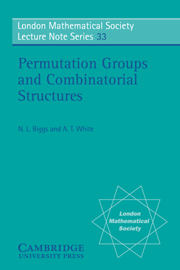Chapter 5 - Maps
Published online by Cambridge University Press: 04 February 2010
Summary
‘The Descriptive-Geometry Theorem that any map whatever can have its divisions properly distinguished by the use of but four colours, from its generality and intangibility, seems to have aroused a good deal of interest some few years ago …’
P. J. Heawood, in his paper Map-Colour Theorem, 1890.Maps and surfaces
In this chapter we shall discuss graphs realized by a set of points and lines on a closed orientable surface. Although this notion arises in a topological context, we shall show that it is possible to develop it by purely combinatorial arguments. The reader who is unfamiliar with the topology of surfaces should not be at a disadvantage.
We begin at an intuitive level. For our purposes, it is sufficient to say that a ‘surface’ is a compact topological space which has two special properties:
(i) it is locally homeomorphic to ordinary Euclidean 2-space;
(ii) it has a consistent global orientation.
The sphere and the torus are the simplest examples. The Euclidean plane is not compact, and so it is not a ‘surface’ for us; however, it may be made homeomorphic to a sphere by the addition of a single point, and so the two spaces have very similar properties. The Klein bottle is not allowed, since it has no consistent global orientation.
Let us suppose that a graph Γ is represented by a set of points and lines on a surface, in such a way that the lines intersect only at the points representing their end vertices.
- Type
- Chapter
- Information
- Permutation Groups and Combinatorial Structures , pp. 103 - 137Publisher: Cambridge University PressPrint publication year: 1979



